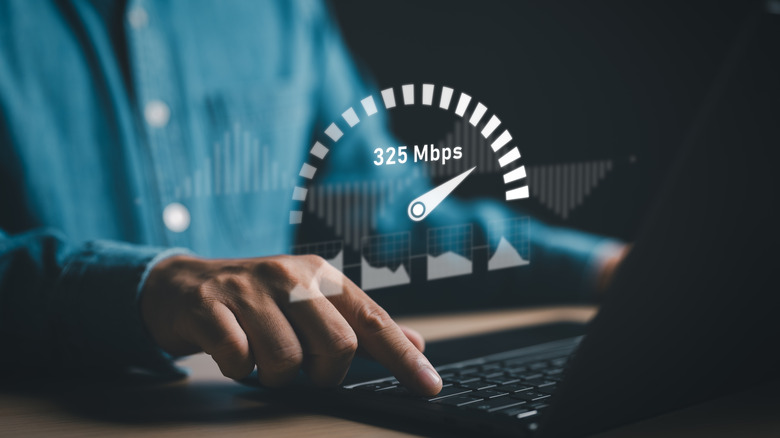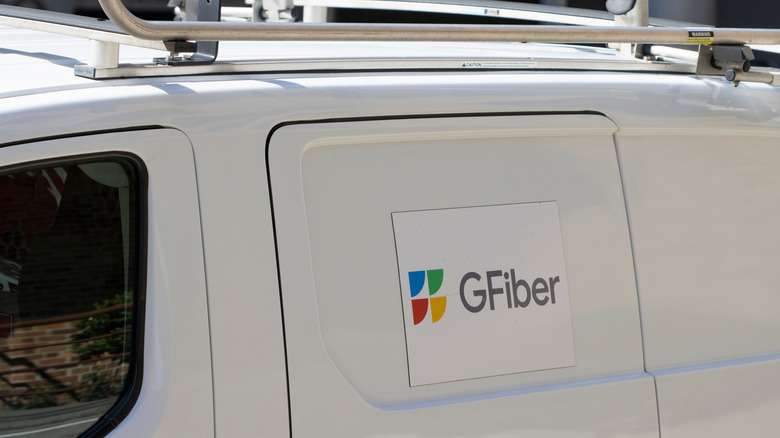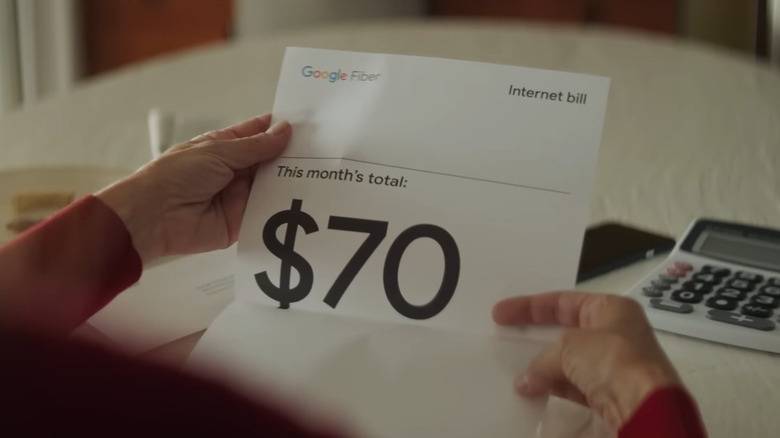Google Fiber Vs. Starlink: The Key Differences (And Why They Matter)
In the modern day, having an internet connection is a necessity, and every service provider tries to bring the best possible option to their customers. Among the most unique of these providers is Starlink and Google's GFiber, which offer a roughly similar price range for their plans, but they're distinctly different in many ways. Perhaps the biggest difference between GFiber and Starlink is the way they deliver internet to your home.
Google Fiber, as its name suggests, uses a fiber optic cable that runs from a local infrastructure to your property. It physically connects you to the network hub. Meanwhile, Starlink works a little differently. Instead of a physical line, it relies on a network of low orbit satellites that are miles above Earth. This means your internet essentially comes from space.
This major contrast in technology makes either service a better fit for users with specific needs. But how exactly do you pick the right one for your case? To guide you, here are the key differences between Google Fiber and Starlink and why they matter.
Which internet service is faster?
Google Fiber and Starlink use completely different technologies, so they inherently offer distinct performances too. With Google Fiber's system, the internet speed can go from 1 Gbps to as fast as 8 Gbps, depending on the plan you purchase. Specifically, its Core 1 Gig plan can get up to 1 Gbps, 3 Gbps for the Home 3 Gig plan, and 8 Gbps for the Edge 8 Gig plan. This rate stays the same for both upload and download. In terms of latency, GFiber's ping normally hovers around 13ms.
Since Starlink is wireless, it's significantly slower than Google Fiber. Depending on what plan you're subscribed to and where you are, you could see download rates anywhere from 45 to over 300 Mbps. The upload rates don't reach such speeds, though, and are roughly between 10 and 30 Mbps only. The latency is fairly similar across the Starlink plans, only changing based on your location. For instance, it's between 23 to 28 ms in California but can go up to 40 ms in Arkansas.
Because of the massive difference in speeds, there are cases where Starlink might not be for you. If you live in a household with heavy internet use, it's better to go with GFiber's plans if it's available in your area. GFiber's higher upload speeds and lower latency can also be convenient for streamers, competitive online gamers, and software developers who often upload large files to the cloud.
Which is easier to install?
Google Fiber and Starlink require different installation methods and equipment, with GFiber primarily installed by professionals. The GFiber technicians are responsible for running a fiber cable from the street to your home and setting up the Network Interface Unit (NIU) and Fiber Jack on your property. From the Fiber Jack, you can then choose to connect it to the included router yourself or have the technician complete the entire process for you.
Every Starlink dish or plan you sign up for, on the other hand, is installed by you, the consumer. Once you place your order, Starlink will deliver the hardware to your home, which usually includes with the dish, router, power supply, and cables. The Starlink app will then walk you through the setup process from start to finish, which will take about an hour.
Since GFiber requires a physical cable, you can't readily move it around. It stays in the same property it was initially installed in. Starlink is more portable. You can change your location from the app, or simply switch to a Roam plan and use the hardware anywhere else, which is perfect when you're out camping or living that digital nomad life.
Other key differences to consider
Another major difference between these two service providers is availability. GFiber may be the faster option between the two, but it's yet to be deployed as broadly as Starlink in the United States. As of this writing, only select cities in 19 states, including California, Florida, and Texas, have access to GFiber.
On the other hand, Starlink's coverage area includes all 50 U.S. states, plus at least 30 other countries like Japan, Brazil, and the U.K. This is mostly in line with Starlink's mission to deliver high-speed internet worldwide, especially to remote and underserved areas with little to no network infrastructure. If you're planning to get GFiber, make sure to check if it's available in your area first. If you're anywhere in the U.S., Starlink will most definitely work for you.
When it comes to price, Google Fiber offers three plans, ranging from $70 to $150 a month. Starlink's Personal plans are further categorized into two: Residential and Roam. You can get the Residential plan, which is meant for fixed-location users, for either $80 or $120 a month. The Roam plans, designed for internet users on the go, are available for $50 (cap at 50 GB) or $165 (unlimited) monthly. For users who need at-home internet, GFiber's 1 Gig plan is clearly cheaper and faster. For people on the go, you can only get such plans from Starlink.



